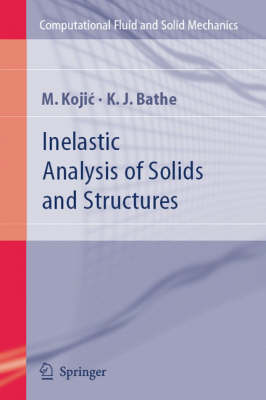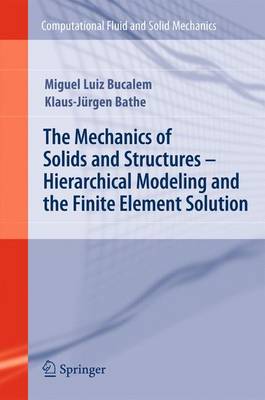Computational Fluid and Solid Mechanics
3 total works
The Finite Element Analysis of Shells - Fundamentals
by Dominique Chapelle and Klaus-Jurgen Bathe
Inelastic Analysis of Solids and Structures
by M. Kojic and Klaus-Jurgen Bathe
Inelastic Analysis of Solids and Structures presents in a unified manner the physical and theoretical background of inelastic material models and computational methods, and illustrates the behavior of the models in typical engineering conditions. The book describes experimental observations and principles of mechanics, and efficient computational algorithms for stress calculations as typically performed in finite element analysis. The theoretical background is given to an extent necessary to describe the commonly employed material models in metal isotropic and orthotropic plasticity, thermoplasticity and viscoplasticity, and the plasticity of geological materials. The computational algorithms are developed in a unified manner with some detailed derivations of the algorithmic relations. Many solved examples are presented, which are designed to give insight into the material behavior in various engineering conditions, and to demonstrate the application of the computational algorithms.
The Mechanics of Solids and Structures - Hierarchical Modeling and the Finite Element Solution
by Miguel Luiz Bucalem and Klaus-Jurgen Bathe
In the recent decades, computational procedures have been applied to an increasing extent in engineering and the physical sciences. Mostly, two separate fields have been considered, namely, the analysis of solids and structures and the analysis of fluid flows. These continuous advances in analyses are of much interest to physicists, mathematicians and in particular, engineers. Also, computational fluid and solid mechanics are no longer treated as entirely separate fields of applications, but instead, coupled fluid and solid analysis is being pursued. The objective of the Book Series is to publish monographs, textbooks, and proceedings of conferences of archival value, on any subject of computational fluid dynamics, computational solid and structural mechanics, and computational multi-physics dynamics. The publications are written by and for physicists, mathematicians and engineers and are to emphasize the modeling, analysis and solution of problems in engineering.


